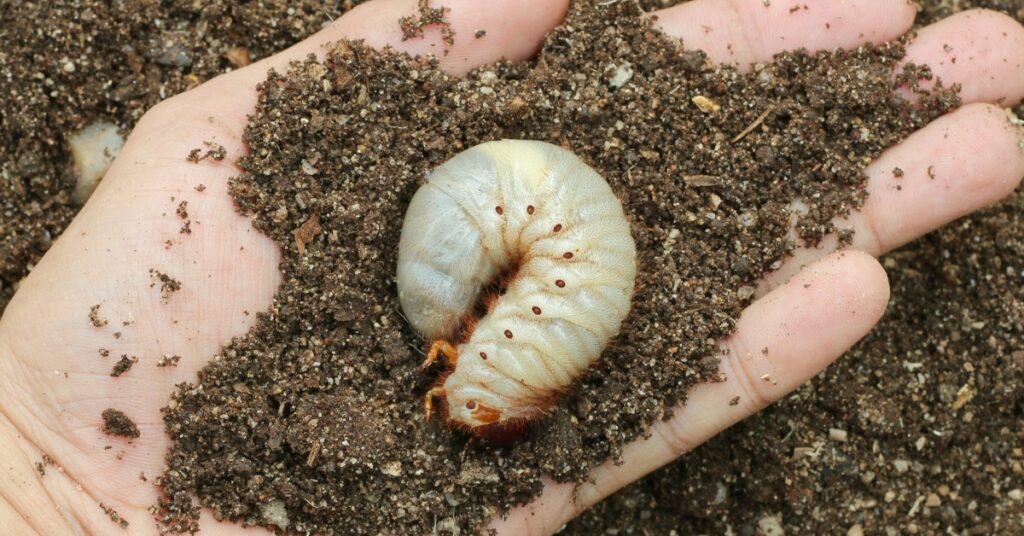If you’re dealing with grubs in your lawn, it’s important to take action now to prevent them from causing damage. Grubs are the larvae of various types of beetles, such as Japanese beetles or June bugs, and they feed on the roots of grass, which can lead to brown patches and weakened turf. Here are some steps you can take to control grubs in your lawn:
- Identify the problem: Look for signs of grub infestation, such as brown patches of grass that easily lift away from the soil, an increased presence of birds or skunks digging up the lawn in search of grubs, or adult beetles flying around. Digging up a small section of the affected area can help you confirm the presence of grubs.
- Determine the severity: Check the density of grubs in the affected area. If there are only a few grubs per square foot, it may not require immediate treatment. However, if there is a high concentration of grubs, treatment may be necessary.
- Apply beneficial nematodes: Beneficial nematodes are microscopic organisms that feed on grubs and can help control their population. You can purchase nematodes from garden centers or online. Follow the instructions on the package to apply them to your lawn.
- Use biological insecticides: There are some biological insecticides available that specifically target grubs. These products contain naturally occurring bacteria (e.g., Bacillus thuringiensis) that infect and kill the grubs. Follow the instructions provided with the insecticide for proper application.
- Maintain a healthy lawn: A healthy lawn is more resistant to grub damage. Ensure you are following proper lawn care practices, such as regular mowing, watering deeply but infrequently, and fertilizing appropriately. A well-maintained lawn can recover more easily from grub feeding.
- Consider chemical control: If the infestation is severe or other methods haven’t been effective, you may need to resort to chemical control. There are various insecticides available that target grubs. Read and follow the instructions on the product label carefully to ensure safe and effective application.
It’s worth noting that prevention is key in controlling grubs. Taking steps to maintain a healthy lawn, such as proper watering and fertilization, can make your turf less attractive to beetles looking to lay their eggs. Additionally, keeping your lawn well-drained and aerated can discourage grubs from settling in your soil.







